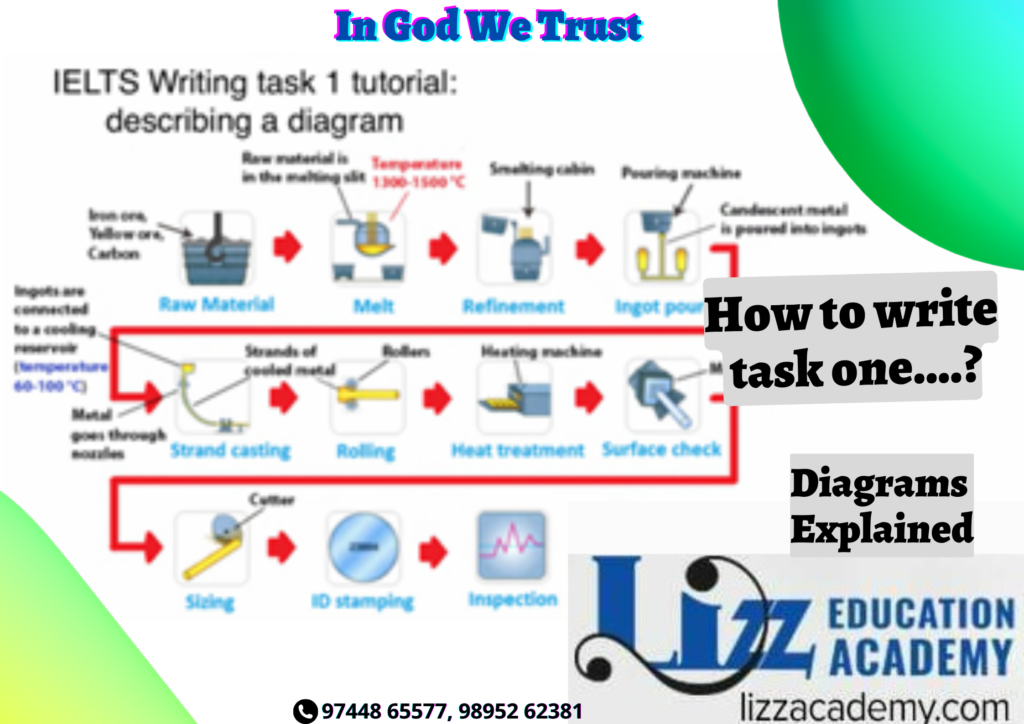
How to write task 1 in your IELTS exam is a question in the mind of all the IELTS takers. You will get a diagram that gives you some basic information about a process or a sequence of events. Once you have read the task carefully, you need to plan your answer. Since you have only 20 minutes of advised time to complete the task, you do not have time to write a detailed plan on paper. So you spend two minutes to understand the given task. You need to look into everything noticeable.
Interpreting the task correctly
Interpreting the task correctly will help the examiner to realise that you understand the task clearly. It is important as the examiner is looking for candidates who comprehend english well. Being able to interpret the task well and express it for the reader the reader in reading. Once the reader understands it without looking at the given picture, your reporting is good.
Structuring
The second of the assessment criteria, based on which your writing is assessed and given a score, is ‘cohesion and coherence’. This part of your writing calls for logical paragraph divisions. And the real components of your report will be well organised paragraphs of Introduction, Body paragraph(s) and a summary for the final paragraph.
Here your Introduction can be a paraphrase of the description of the task. So that the one who reads the introduction understands what is the report you are submitting about. Introducing the subject to the reader is, however, the purpose of your introduction.
Example question
The diagram below shows the production of steam using a gas cooled nuclear reactor.
Summarise the information by selecting and reporting the main features, and make comparisons where relevant.

The given diagram illustrates how steam is used in a reactor to prevent overheating while it is powering the turbine.
A gas-cooled nuclear reactor consists of the reactor itself and a heat exchanger. The reactor contains uranium fuel elements which are surrounded by graphite moderators and topped by charge tubes for loading fuel elements, and boron control rods. The whole reactor is contained in a pressure vessel surrounded by a concrete shield.
From the reactor the hot gas flows through a duct into the heat exchanger which is outside the concrete radiation shielding. In the heat exchanger, steam is generated in a secondary loop. There a pipe brings in water which is heated to steam, and this then flows out to the turbo-alternator. Meanwhile the hot gas sinks to the bottom of the heat exchanger and passes through a gas blower which pushes it into a cool gas duct and back to the reactor.
As can be seen, this is a continuous cycle that keeps the reactor from overheating, while carrying away the heat and steam, which will power the turbines.

